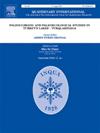Archaeobotanical study of the Tangzigou site reveals wild plant exploitation in the terminal Paleolithic of southwest China
IF 1.8
3区 地球科学
Q3 GEOGRAPHY, PHYSICAL
引用次数: 0
Abstract
Wild plants have been an important part of the diet of ancient people, and their remains at archaeological sites are therefore a good proxy for disentangling human exploitation of plant foods in the history. Yunnan in southwest China has been poorly explored in archaeobotany, especially for periods before the Neolithic when gathering was still dominant in plant utilization. Here, we present an archaeobotanical assemblage consisting of fruit and seed remains from the regionally terminal Paleolithic (8740 ± 30 BP) Tangzigou site in western Yunnan. Our taxonomic identification shows that the archaeobotanical assemblage is poor in diversity with only four taxa, i.e., Celtis sp. (hackberry), Prunus persica (wild peach), Vitis sp. (wild grape) and Choerospondias axillaris (Nepal hog plum), which have served as potential food resources to ancient people of the site. However, the full picture of plant exploitation by the Tangzigou people cannot be gained only from the low abundance and diversity of plant remains at the site itself. Based on what is known of the practices of hunter-gatherers today, most fruits and seeds were probably eaten by Tangzigou people during the course of foraging trips, with only a small fraction being carried back to the site for processing and consumption. The fruit stone remains of C. axillaris have been processed with fire accidently or intentionally; the intentional fire-processing was probably for consumption of the seeds inside, which is compatible with the processing of animal foods with fire by the Tangzigou people. Our study brings to light the possible incorporation of plant food resources into the diet of the latest Paleolithic Tangzigou people who are suggested to have lived under a warm subtropical climate. It also enriches our knowledge of the historical use of wild plants by early Holocene humans in southwest China.
汤子沟遗址的考古植物学研究揭示了中国西南地区旧石器时代末期野生植物的开发利用
野生植物一直是古代人类饮食的重要组成部分,因此,在考古遗址中发现的野生植物遗骸是解开历史上人类对植物性食物开发的一个很好的代表。中国西南地区云南的考古植物学研究很少,特别是在新石器时代之前,采集仍然是植物利用的主要方式。本文研究了滇西汤子沟遗址旧石器时代末期(8740±30 BP)的水果和种子化石。分类鉴定结果表明,该遗址的考古植物群落多样性较差,仅有Celtis sp. (hackberries)、Prunus persica(野桃)、Vitis sp.(野葡萄)和Choerospondias axillaris(尼泊尔猪李)4个分类群,这些分类群可能是该遗址古人的潜在食物资源。然而,仅从遗址内残存植物的低丰度和多样性来看,并不能全面反映唐子沟人对植物的利用情况。根据今天已知的狩猎采集者的做法,大多数水果和种子可能是汤子沟人在觅食过程中食用的,只有一小部分被带回现场加工和食用。腋下果核残体被人为或无意火处理;故意用火处理可能是为了食用里面的种子,这与汤子沟人对动物性食品的火处理是一致的。我们的研究揭示了将植物食物资源纳入最新旧石器时代塘子沟人饮食的可能性,塘子沟人被认为生活在温暖的亚热带气候下。这也丰富了我们对中国西南地区全新世早期人类利用野生植物的历史认识。
本文章由计算机程序翻译,如有差异,请以英文原文为准。
求助全文
约1分钟内获得全文
求助全文
来源期刊

Quaternary International
地学-地球科学综合
CiteScore
5.60
自引率
4.50%
发文量
336
审稿时长
3 months
期刊介绍:
Quaternary International is the official journal of the International Union for Quaternary Research. The objectives are to publish a high quality scientific journal under the auspices of the premier Quaternary association that reflects the interdisciplinary nature of INQUA and records recent advances in Quaternary science that appeal to a wide audience.
This series will encompass all the full spectrum of the physical and natural sciences that are commonly employed in solving Quaternary problems. The policy is to publish peer refereed collected research papers from symposia, workshops and meetings sponsored by INQUA. In addition, other organizations may request publication of their collected works pertaining to the Quaternary.
 求助内容:
求助内容: 应助结果提醒方式:
应助结果提醒方式:


